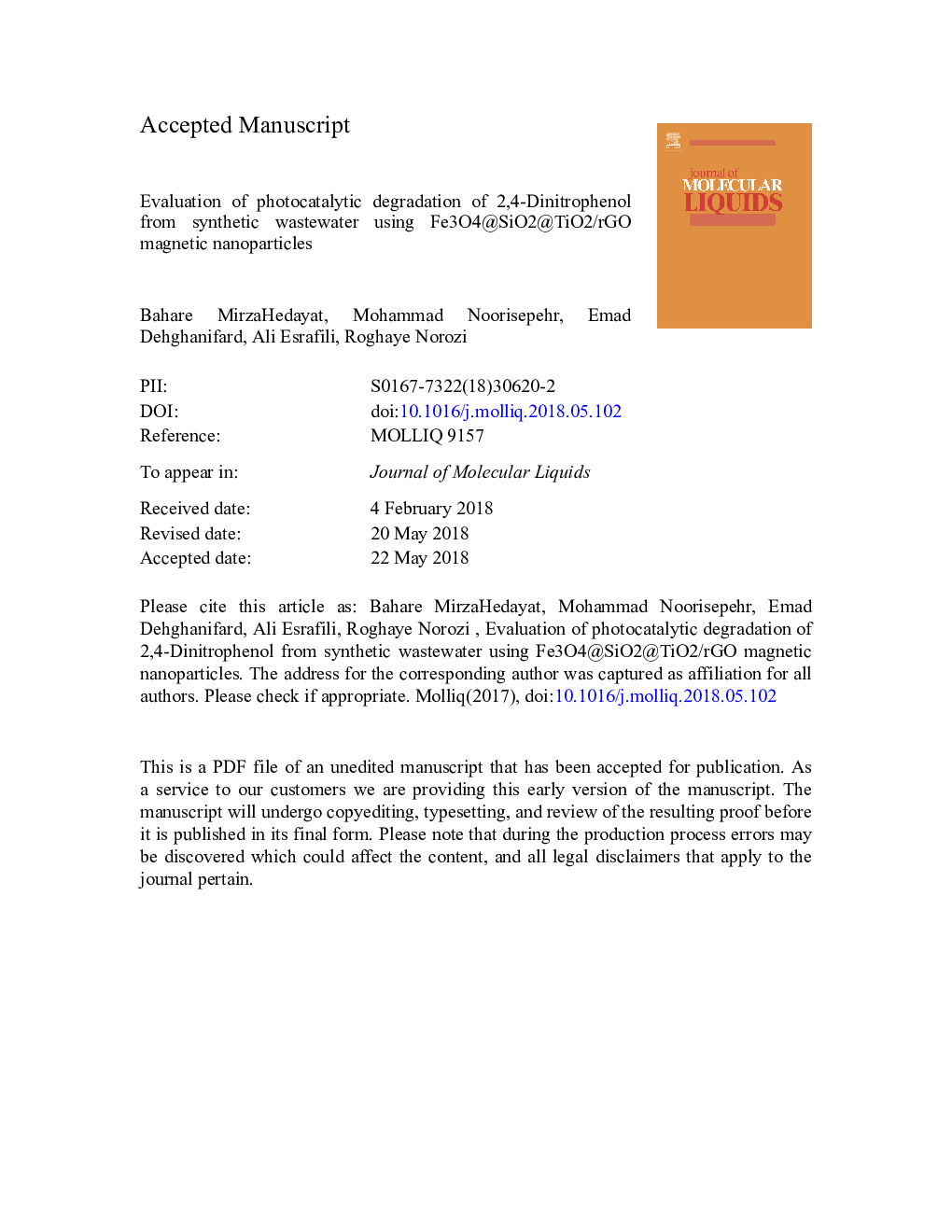| Article ID | Journal | Published Year | Pages | File Type |
|---|---|---|---|---|
| 7842271 | Journal of Molecular Liquids | 2018 | 33 Pages |
Abstract
Dinitrophenols (DNP), as a priority pollutant, is present in the effluents of several industries and also attracts the environmentalists' attentions, due to its harmful effects on human health. Several research have been conducted for 2,4-DNP degradation using advanced oxidation process (AOP). This study aimed to evaluate the degradation of 2,4-DNP by Fe3O4@SiO2@TiO2/rGO photocatalyst. FESEM, EDS, XRD, FTIR and VSM techniques were done to determine the characteristics of synthesized catalyst. Different variables such as pH of solution, initial concentrations of 2,4-DNP and photocatalyst dosages were studied to measure the degradation of 2,4-DNP. Also, the effect of interfering ions (e.g., Clâ, SO42â, CO32â) were investigated. Mineralization of pollutant in optimum conditions was also determined by TOC analysis. Finally, the reusability of magnetic photocatalyst was deliberated. In optimum experimental conditions (pHâ¯=â¯7, 2,4-DNPâ¯=â¯40â¯mg/L, photocatalyst dosageâ¯=â¯0.2â¯g/L), maximum 2,4-DNP removal was obtained 88.84% in 30â¯min reaction time with TOC removal of 50.04%. Interfering ions reduced 2,4-DNP degradation in order of CO32-â¯<â¯Clââ¯<â¯SO42â. Photocatalyst recovering (4 round) caused reduction of removal efficiency within 16.58%. Photocatalytic degradation of 2,4-DNP followed pseudo first kinetic order. It could be concluded that the synthesized photocatalyst was a proper choice for degradation of 2,4-DNP by photocatalytic AOP process, based on good performance and high reusability.
Keywords
Related Topics
Physical Sciences and Engineering
Chemistry
Physical and Theoretical Chemistry
Authors
Bahare MirzaHedayat, Mohammad Noorisepehr, Emad Dehghanifard, Ali Esrafili, Roghaye Norozi,
